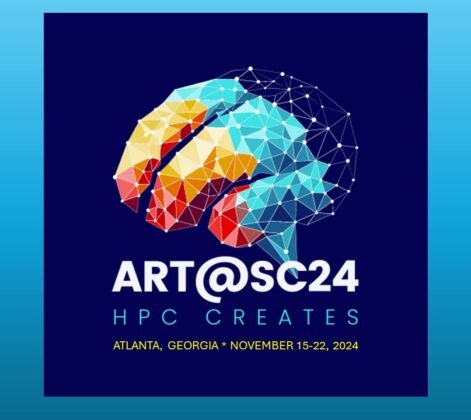Featured in HPCwire on June 20, 2018
The University of Ljubljana in Slovenia hosted the third annual EHPCSW18 and fifth annual PRACEdays18 events which opened May 29, 2018. The conference was chaired by PRACE Council Vice-Chair Sergi Girona (Barcelona Supercomputing Center), and officially opened by PRACE Managing Director and Chair of the EHPCSW & PRACEdays OPC Serge Bogaerts. An official welcome was provided by PRACE Council Chair Anwar Osseyran (Dutch National HPC Center, SURFsara); and University of Ljubljana Minister of Education, Science and Sport Maja Makovec Brenčič.
With 343 registered attendees from Europe, Australia, Asia and the United States who represented a wide range of disciplines, EHPCSW18, with many co-located meetings, was a monumental feat of execution. Much of the credit goes to local organizers, contracted consultancies and volunteers who serve on planning committees. I was especially grateful for the opportunity to work closely with the communication team led by Marjolein Oorspring and Silke Lang who are based at the PRACE office in Brussels.
The venue at the University of Ljubljana, Faculty of Law offered assembly and session rooms so everything was conveniently located under one roof. The schedule was thoughtfully planned to allow ample opportunities to network while a wealth of information was packed into five days. Monday opened with the EXDCI-EHPCSW18 workshop. Tuesday began with general session keynotes, and split into one industrial and five scientific parallel tracks, with three workshops organized by EHPCSW partnering organizations. In late afternoon, everyone reconvened for general sessions. Wednesday and Thursday featured a similar format with four parallel workshops each day, and Friday was reserved for private project meetings.
Tuesday morning keynote addresses were delivered by Igor Papič (U-Ljubljana); Leonardo Flores Añover (European Commission (EC)/Polytechnic University of Madrid); Sai Narasimhamurthy (Seagate/Vice-President for Industry ETP4HPC); Luciano Rezzolla (Goethe University); Wolfgang Gentzsch (UberCloud); Jean-Pierre Panziera (Chair of ETP4HPC); and Erik Lindahl (PRACE Scientific Steering Committee).
 Leonardo Flores Añover provided an overview of the EC’s investment in HPC. The current EC funding program, H2020 (2014-20) is the largest single investment in research and development in the history of Europe. The program spans seven years and was funded with 77 billion euros. “With 28 participating member states and independent ministries, coordination can be challenging,” said Flores. He explained how the EC HPC road map compares to that of the U.S., Japan and China.
Leonardo Flores Añover provided an overview of the EC’s investment in HPC. The current EC funding program, H2020 (2014-20) is the largest single investment in research and development in the history of Europe. The program spans seven years and was funded with 77 billion euros. “With 28 participating member states and independent ministries, coordination can be challenging,” said Flores. He explained how the EC HPC road map compares to that of the U.S., Japan and China.
A recent EC report includes a further projection for the next EU financial framework: 2021-2027 is expected to support two post-exascale machines. Looking forward, the EC is focusing on hybrid HPC and quantum infrastructure, novel applications in cybersecurity, artificial intelligence, development of competence centers, and strengthening of the overall federation of HPC resources.
Flores closed with an appeal for community feedback. Turlough Downes (Dublin City University) raised his hand, and suggested that HPC education be added to the Commission’s road map for the future. “The advanced-skills training offered by HPC centers is not enough,” he said. “Training is only part of what is needed. If we hope to establish critical mass of skilled labor for the future, we must expose more students to HPC and data science while they are in college,” he said. “To do this, the Commission could engage in meaningful dialogue with education experts at European Higher Education Institutions (HEIs). With their input, the Commission could help incorporate relevant courses at HEI’s across Europe,” he added.
Wednesday evening was the conference social activity that took place at Postojna Cave, home to more than 100 cave-dwelling species. One of the more famous Postojna creatures is the cave salamander, or “human-fish.” It is one of few organisms that can live for 10 years without eating. After a hard rain, they are occasionally carried to the surface where their bodies are found on the river’s shore. In ancient times, people thought they looked like embryonic dragons, and that’s how the myth was born.
 Spelunker Derek Groen had attended one of the early EU-US HPC Summer Schools as a graduate student back in 2010. Today Dr. Groen lectures at Brunel University London, and his research involves the modeling of large-scale blood flow simulations and agent-based migration models.
Spelunker Derek Groen had attended one of the early EU-US HPC Summer Schools as a graduate student back in 2010. Today Dr. Groen lectures at Brunel University London, and his research involves the modeling of large-scale blood flow simulations and agent-based migration models.
In addition to his work at Brunel, he’s a Fellow of the Software Sustainability Institute, and visiting lecturer at the Center for Computational Science at University College London. He was in Ljubljana to participate in the PRACE User Forum session, and to help host the ComPatworkshop.
Groen’s daughter kept a watch out for dragons as dad pushed her stroller through the cave. “I’m glad she could join me,” he said. “I wouldn’t have been able to attend PRACEdays otherwise,” he added.
Coincidentally, Groen’s wife, Moqi, an assistant professor of finance at the London School of Economics, traveled with their infant daughter to the U.S. that same week to attend a professional conference. Like all professionals who have family obligations, The Groen’s have found that the home work-life balancing act requires extra expense and effort if they hope to pursue professional development opportunities. Things change quickly in some disciplines; if they miss an annual opportunity to build professional networks and train in the use of emerging technologies, it’s difficult to catch up. It’s nice to know that PRACE is among conferences that are making it easier for scholars with family obligations to attend.

Moqi and baby; photo by Tomislav Ladika
Tuesday’s industrial track was opened by Session Chair Lee Margetts (University of Manchester, UK). A highlight among twelve presentations featured in the industrial track was a presentation by Paul Graham (University of Edinburgh) about the PRACE “SME HPC Adoption Programme in Europe,” or SHAPE, which is a pan-European program that promotes HPC uptake by small and mid-sized enterprises, or SMEs. Speaking of dragons, SMEs encounter hurdles that are difficult to overcome without outside help, but personnel with advanced skills simply can’t be found in some places. Even if they could find specialists, it would be cost-prohibitive to employ them.
SMEs may apply to the PRACE SHAPE program for access to free expertise and resources, and it’s not necessary for them to be affiliated with a research lab or university. Experts might come from one or more PRACE centers, and computational resources are accessed by the SMEs via high-speed networks. The specialists don’t have to be from the SME’s home region or even country.
“For companies engaging with SHAPE, HPC does not always mean massive supercomputers utilizing tens of thousands of cores,” said Graham. “In one case, code was optimized so it ran more quickly on the SME’s desktop machine. With minimal effort from a SHAPE expert, hundreds of hours were saved, which translated to a shorter time to solution and significant savings for that SME. The key is that SHAPE works with each SME to find the best solution for their situation. ”
SHAPE provides a boost to under-served regions by helping local SMEs, and the workforce they generate, to become globally-competitive. The European Union acknowledges that 99 percent of its businesses are categorically SMEs; when they succeed, they contribute to Europe’s overall economic health and vitality.
One SHAPE success story was presented by Tomáš Karásek who leads the Parallel Algorithms Research Lab at IT4Innovations, VSB at the Technical University of Ostrava, Ostrava, Czech Republic. Karásek’s presentation was titled, “Virtual Prototyping in Development Cycle of 3D Printed Cranial Orthoses.”
Newborn babies—especially premature ones—can develop skull deformities by age four to 18 months if their neck and core strength won’t support the weight of their head. At birth, the skull is naturally pliable so babies can make their way through the birth canal, but their skull is subject to positional molding as they mature and their bones are no longer malleable. Without “tummy time,” their heads become permanently flat on the posterior, and broader from side-to-side from lying on their back.

Copyright: The Invent Medical Group (IMG), Czech Republic
The standard treatment for reshaping infants’ skulls involves a thick, heavy plastic cap. The device is a uniform shape with graduated sizing that must be constantly refitted. It may not make contact with the child’s head where it needs to, and the material doesn’t breathe. The cap’s corrective properties are subject to trial-and-error; it’s so uncomfortable, that babies become preoccupied with it to the detriment of their overall development. Therefore, many parents won’t force their children to wear them, so the deformity becomes permanent as the child’s skull matures.
SHAPE assisted this SME by replacing physical testing with virtual prototyping. They created a semi-automated workflow, and substituted commercial codes with open-source. The child’s head can be scanned in a non-invasive way, and then HPC is used to model and prototype a customized, 3D printed cap. The new prototype employs an attractive lace-like design that makes contact and provides the right amount of pressure where needed. While it’s strong, the lacy design allows airflow to the infant’s head and hair follicles. Layers of locking shells form to fit the child’s unique head shape. The stiffness of the inner, corrective shell varies with prescribed medical advice, and can be resized computationally. It sits securely on the child’s head, but is so light they forget they’re wearing it. The end-result is a more effective and comfortable device that is far more likely to be tolerated by infants, and therefore used by parents.
There are SHAPE whitepapers, and many more success stories on the PRACE website.
Watch for more news about PRACEdays18 in HPCwire. Meanwhile, mark your calendars for #PRACEdays19 and #EHPCSW19 in Poznan, Poland, May 13-17, 2019.
About PRACE
The Partnership for Advanced Computing in Europe (PRACE) is an international non-profit association with its seat in Brussels. The PRACE Research Infrastructure provides a persistent world-class high performance computing service for scientists and researchers from academia and industry in Europe. The computer systems and their operations accessible through PRACE are provided by 5 PRACE members (BSC representing Spain, CINECA representing Italy, ETH Zurich/CSCS representing Switzerland, GCS representing Germany and GENCI representing France). The Implementation Phase of PRACE receives funding from the EU’s Horizon 2020 Research and Innovation Programme (2014-2020) under grant agreement 730913. For more information, see www.prace-ri.eu.
Feature image copyright Kim Barnes; used with permission.




